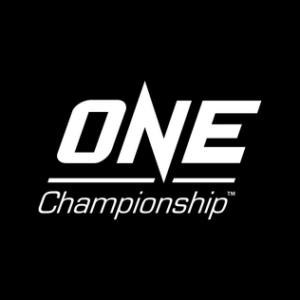
Are you wondering how ONE Championship Weight-Cutting Rules Work?
In this article, we’ll explain how ONE Championship’s weight-cutting rules work, how ONE Championship’s hydration testing works, what happens if a ONE Championship fighter misses weight, whether ONE Championship’s weight-cutting rules are better than the UFC’s, and whether ONE Championship’s hydration testing works.
Contents
How Does ONE Championship’s Weight-Cutting Rules Work?
The current One Championship weight-cutting rules were introduced in 2016 following the death of ONE Championship fighter, Yang Jian Bing, who died of cardiopulmonary as a result of dehydration (weight cutting).
ONE Championship’s weight-cutting rules aim to prevent fighters from weight-cutting and work in the following way.
- Before a fight is scheduled, fighters have to weigh themselves daily to find their ‘walking weight’.
- Fighters have to log their walking weight via a ONE Championship web portal.
- Their walking weight dictates what weight class they’ll be fighting in, known as their contracted weight class.
- With this walking weight identified and a fight lined up, fighters are then randomly weighed by ONE Championship during their fight camp to make sure their walking weight is consistent.
- Fighters are then weighed at the start of fight week (the week before a fight) to again check they’re close enough to their contracted weight class.
- Fighters then have their official weigh-in the day before a fight to make sure they’re no more than the upper limit of their contracted weight class.
- The fighters who pass are again weighed on fight day roughly 3 hours before a fight to make sure there haven’t been any large weight fluctuations.
- If a fighter fails the official weigh-in the day before a fight, they have a second chance to make weight on fight day.
- If they pass, they can fight, but if they’re overweight the fight is either canceled or turned into a catchweight bout (discussed below).
- Fighters are weighed in post-bout to make sure they’re not 5% over their contracted weight class.
This is how ONE Championship’s weight-cutting rules work, but there’s also ONE Championship’s hydration testing working alongside them.
How Does ONE Championship’s Hydration Testing Work?
Along with being regularly weighed, fighters have to pass ONE Championship’s hydration testing, which works like this:
- Fighters take urine-specific gravity hydration tests at the start of fight week to make sure they’re not cutting water weight. A fighter must pass the hydration test before they can weigh in.
- Fighters are then hydration tested the day before a fight.
- Fighters must have a urine-specific gravity value of 1.025 or below to pass the test. Over 1.025 means a fighter’s dehydrated, and below means they’re hydrated.
- Any fighter failing this hydration test has a second hydration test on fight day. If they again fail the test on fight day, they’re disqualified from fighting.
What Happens if a Fighter Misses Weight in ONE Championship?
If fighters pass the hydration tests but miss weight, the fight will either be canceled or turned into a catchweight. A catchweight bout is where both fighters agree to fight above the contracted weight class, even if one of them made weight.
Fighters can fight at catchweight on the following conditions:
- Musn’t weigh more than 5% of the contracted weight class
- The opponent who made weight must agree to fight at catchweight
- Both fighters who missed weight agree to fight at catchweight
For example, if a fighter’s contracted to 155 lbs featherweight, their max weight must be 162.75 lbs.
If the fighter who made weight agrees to fight at catchweight, they take a percentage of the total fight purse from the fighter who missed weight. Normally, it’s between 20 to 30% and is decided by the Commission for the event.
The Commission also takes half the percentage, so if they decide it to be 30%, the fighter takes 15% and the Commission takes 15%.
ONE Championship fighters can also miss weight after the fight. They’re weighed post-bout and mustn’t weigh more than 5% over their contracted weight class.
This aims to stop a fighter from dehydrating, gaming the system, and then fully rehydrating and fighting at a much higher weight.
If a fighter’s over 5% of their contracted weight in the post-bout weigh-in, they face the following penalties.
First offense – just a warning
Second offense – the fighter is penalized 25% of his/her total fight purse
Third offense – the fighter is penalized 50% of his/her total fight purse, is disqualified from fighting at this weight class again, and is forced to fight in the weight class above for future fights.
Note: These offenses are only for post-bout weigh-in misses and aren’t for missing weight prior to a fight.
Are ONE Championship’s Weight-Cutting Rules Better Than the UFC’s?
In theory, ONE Championship’s weight-cutting rules are better than the UFC’s for several reasons.
1. ONE Championship fighters aren’t severely dehydrating themselves, meaning there’s less risk of canceled fights because they’re healthy and ready to fight. This is better for the fighters and business.
2. ONE Championship fighters aren’t dehydrated and have much more energy for the upcoming fight as a result – producing better quality fights.
3. ONE Championship fights are decided by skill, rather than a fighter abusing the strength and weight that comes from having an additional 15 to 20 lbs of muscle over an opponent.
The majority of the MMA community understands the benefits of ONE Championship’s weight-cutting rules and system.
It avoids unnecessary health issues and potential death, the fighters have much more energy for the fight and are much happier, and fights are more determined by skill.
The UFC hasn’t banned weight-cutting because it’s an MMA tradition and they’re scared to adopt something a competitor was first to establish.
The UFC has managed quite well without changing, and there are also several question marks over the efficacy of the ONE’s system.
Does the ONE Championship Weight-Cutting System Work?
In theory, ONE Championship’s weight-cutting rules and system are brilliant because they stop fighters from unhealthily dehydrating themselves to make a weight class 15 to 25 lbs lower than their actual fighting weight.
However, ONE Championship’s hydration testing has been criticized as being very easily cheated and not stopping fighters from cutting weight.
How Do Fighters Cheat ONE Championship Hydration Testing?
There were two main ways fighters could cheat the ONE Championship hydration testing. One has been mostly solved and one still works in June 2023. The two ways fighters can/could cheat are:
1. Fighters can cheat the ONE Championship hydration testing by drinking distilled water to trick the body into thinking it’s over-hydrated, when they may be cutting weight and dehydrated.
This works because distilled water doesn’t have electrolytes, so the kidney thinks the body is over-hydrated due to how the concentration of blood plummets.
The kidneys then start emptying dilute urine which the fighters give for their urine-specific gravity tests to pass every time.
This means ONE Championship fighters can cut weight and replenish fluids shortly before a hydration test to pass it.
2. Before ONE Championship partnered with International Doping Tests & Management in August 2022, fighters could cheat the hydration test by using diuretics and intravenous fluids (IV) as they weren’t banned from use.
However, fighters can still use diuretics and IVs if they’re granted a therapeutic use exemption (TUV).
What Is the Problem With ONE Championship’s Hydration Testing?
The urine-specific gravity (USG) tests measure the density of urine compared to distilled water. The more waste materials like electrolytes and urea present in the urine, the higher the scores on a USG test will be.
However, the validity of USG tests has been questioned as more research is conducted.
Some of the most significant problems with ONE Championship’s hydration testing are:
- A high-protein diet (which many fighters eat) can increase nitrogen excretion in the urine, which increases urine-specific gravity and leads to a false positive that says fighters are dehydrated when they aren’t. Eating a low-protein diet has the opposite effect and can mark a fighter as hydrated when they’re dehydrated.
- Drug interactions can falsely reduce urine-specific gravity such as lithium.
- Fighters with higher muscle mass generally have a higher urine-specific gravity (proteinuria) reading because they have a higher protein turnover in the body.
- Kidney adaptation to regular weight cuts among fighters further makes the validity of the USG test questionable as these fighters may flush or withhold water differently from other fighters, which means the 1.025 cutoff number is completely useless.
- It’s not understood where the 1.025 USG cutoff number has come from as ONE has never explained it.
Overall, there are plenty of studies and research papers concluding that urine-specific gravity testing is problematic and needs far more research before it can be said to be an effective testing method for sports of any kind.
Other Problems With the ONE Championship Weight-Cutting System
There are 4 main problems with the ONE Championship Weight Cutting system, which are:
1. From 2016 to 2019, ONE didn’t post any information or data about weigh-ins after implementing their new system, so there’s an incomplete data set and a lack of transparency.
2. There’s zero information about the supposed post-bout weigh-ins to ensure fighters aren’t over 5% heavier than their walking weight. It’s unknown whether these weigh-ins are even taking place or whether any of the sanctions are being enforced.
As it stands, the only proof these post-bout weigh-ins happen is the text written on their website.
3. Since they started to share weigh-in data in 2019, there’s only been 1 canceled fight (in 2022) as a result of missed weight/hydration test fails.
However, in the 7 years from 2016 to the end of 2022, roughly 9% of total fights in ONE Championship were fought at catchweight.
By contrast, in ONE’s first 4 years since its founding in 2012 when fighters were openly cutting weight to make weight classes much lower than their walking or fight weight, only 4.5% of total fights were catchweight.
This tells us that many ONE Championship fighters are still cutting weight and trying to game the system, with more fighters missing weight and the bout simply becoming a catchweight.
Essentially, ONE’s aim of having fighters compete at their walking weight isn’t quite working.
4. Fighters attempting to game the hydration testing via electrolyte manipulation are at risk of hyponatremia. This is when sodium levels in the blood are too low, where serious hyponatremia can cause seizures and even death.
Overall
So, ‘what are ONE Championship’s weight-cutting rules?’
ONE Championship’s weight-cutting rules work by regularly weighing and hydration testing fighters to make sure they’re not cutting weight and are fighting at their walking weight.
In theory, the ONE Championship weight-cutting rules and hydration testing solve the problem of dangerous dehydration.
However, in actuality, ONE Championship fighters are still cutting weight, dehydrating, and gaming the system to get an edge.
Much like how steroids and performance-enhancing drugs are taken by the majority of athletes in the UFC, Bellator, ONE, and all the other top MMA promotions, fighters at the most elite level try to get any advantage they can, and weight-cutting is one of best-known ways to do so.
Promotions like ONE understand this, which is why there’s a complete lack of transparency surrounding their weight-cutting and anti-doping. They don’t want fights canceled and they’re on the side of their fighters at all times.




